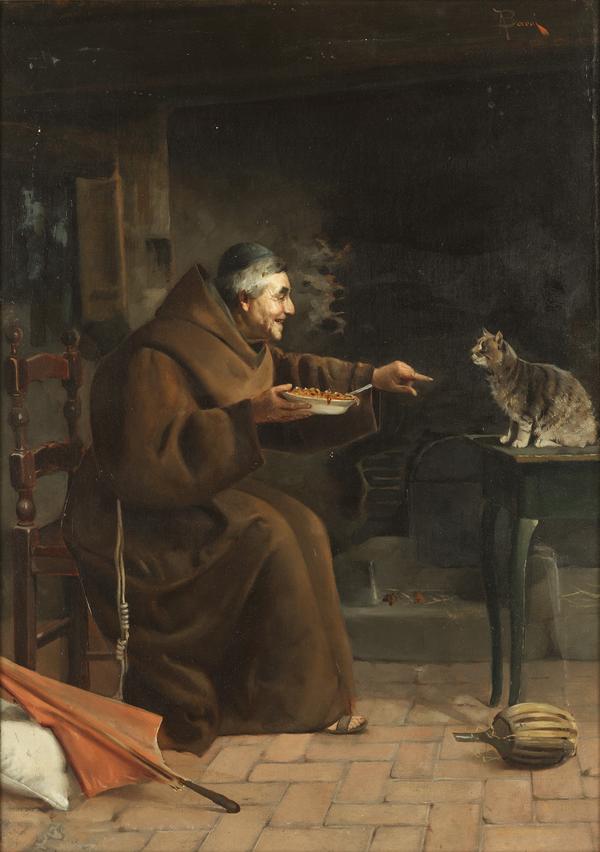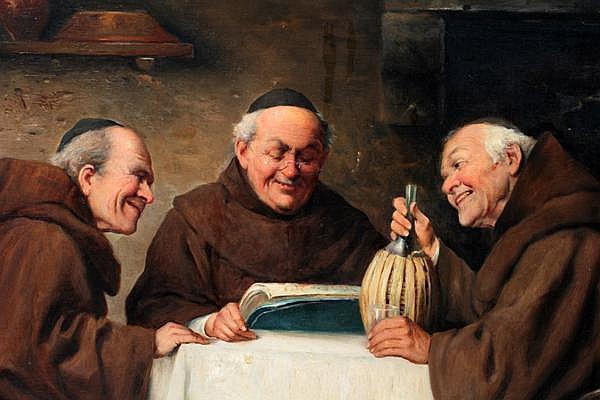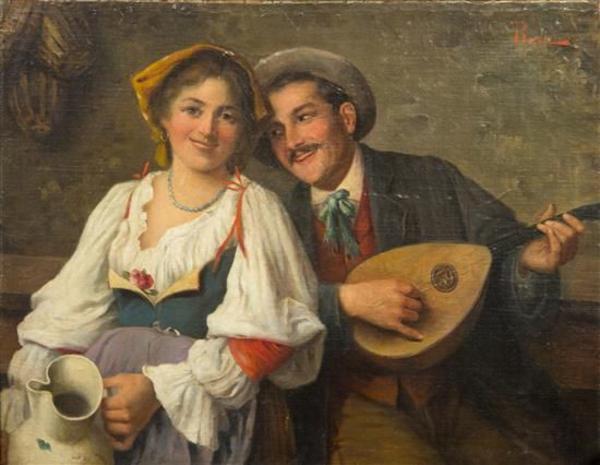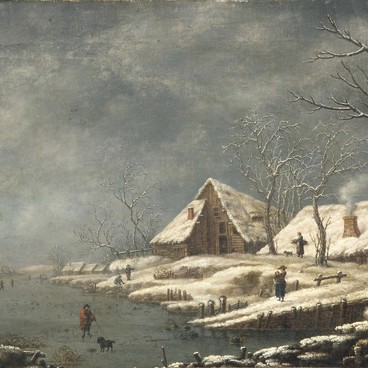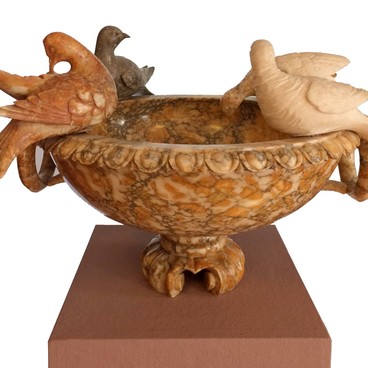Adolfo Bacci painted Capuchin Feeding the Cat approximately in 1880-1890-s. He based it on the motifs of real life in Tuscany. The artist depicted a monk wearing a brown cape (habit) — traditional clothes for the monastic Minor Capuchin Order of Friars. In the late 18th century, the Order practically disappeared, but in 1880-1890-s, it enjoyed a boom again, so you could see capuchins in any Italian street.
Capuchin Feeding the Cat
Creation period
1880-s – 1890-s
Dimensions
58x42,5 cm
Technique
58х42,5 см
Collection
Exhibition
9
Open in app#1
Adolfo Bacci
Capuchin Feeding the Cat
#2
#3
The author worked thoroughly on the details of the painting — the stones in the paved floor, the folds of fabric in the clothes, the carving of the chair back. He placed a fat bottle resembling a traditional Tuscany wine bottle (fiasca) on the floor: the makers started braiding the fragile glass with reed grass or straw back in the Middle Ages. At first such braid was horizontal, and starting from approximately the 18th century it became vertical leaving the upper part open.
#4
Adolfo Bacci often painted capuchins. The monks received their nickname due to pointed hoods of their capes — in Italian the word hood sounds like cappuccio. At first, the nickname was sarcastic, but later it lost its negative connotation. Average people called the monks people’s brothers for their cordiality and generosity.
Bacci Adolfo. Monks at the table. Source: www.auctionzip.com.
#5
The capuchins is a filiation of the Franciscan Order worshipping Saint Francis. Francis of Assisi denied all the property and committed himself to preaching and helping people. His disciples were wearing a rope with three knots. According to one of the versions, the knots symbolized three vows to God: vow of poverty, vow of chastity and vow of obedience. The capuchins turned to be the most austere and rigorous branch of the Mendicant Order — they completely denied any property except for the friar’s habit and sandals on bare feet. Their main ideas were ascetic living, missionary outreach and helping people.
#9
Adolfo Bacci painted capuchins far from ascetic friars — he depicted them as very cheerful people enjoying wine, good food and intermingling with others.
#10
The artist used suppressed color palette when painting monks. He based the palette mainly on brown hues, same as the clothes of the characters, though in general bright colors were more characteristic of Bacci’s work.
Adolfo Bacci. Serenade. Source: www.invaluable.com.
#11
Adolfo Bacci. A refreshing draught. Source: www.askart.co.
The artist lived in Florence, the capital of Tuscany, and the Tuscany school of art – Macciaioli – influenced his work. The followers of this school depicted the scenes of the everyday life in Italy. The school got its name from the Italian word maccia meaning a spot, because the artists of this school had a very open manner of painting with juicy colorful spots. Bacci was not painting with spots; he modelled the volumes with the help of light and shade. However, the school’s influence showed itself in the topics he selected for his paintings and in his open manner of painting.
#8
In general, the author preferred cheerful scenes painting them with love and understanding to the personages. Many pieces by Adolfo Bacci are currently in the collections of South America.
read morehide
00:00
00:00
1x
Capuchin Feeding the Cat
Creation period
1880-s – 1890-s
Dimensions
58x42,5 cm
Technique
58х42,5 см
Collection
Exhibition
9
Open in app
Share

